Air Compressors: Types, Applications and Solutions for Industry
Table of Contents
Introduction to Air Compressors
Air compressors are essential equipment in virtually all industrial environments across the United States. These devices transform mechanical energy into pneumatic energy by compressing atmospheric air, generating compressed air that serves as a power source for countless industrial applications.
Compressed air represents one of the most versatile and safe forms of energy used in American industry, often considered the "fourth utility" after electricity, natural gas, and water. Approximately 70% of manufacturing companies in the US use compressed air systems, which can account for up to 30% of the total electricity consumption in some facilities.
Selecting the right compressor is crucial to ensure operational efficiency, reduce energy costs, and guarantee the reliability of compressed air supply. In this article, we'll explore the different types of compressors, their specific applications, and the key criteria for choosing the optimal system for each industrial need.
Types of Air Compressors
There are various types of air compressors, each with specific characteristics that make them more suitable for certain applications. The main types used in American industry are:
Piston Compressors
Piston compressors operate using a piston and cylinder mechanism that mechanically compresses air. This type of compressor is one of the most traditional and widely used, especially in applications requiring high pressures.
Main characteristics:
- Available in single or two-stage configurations
- Capacity to generate pressures up to 30 bar or more
- Options with and without oil
- Ideal for intermittent use
- Require regular maintenance
Piston compressors are mainly divided into two categories:
Oil-lubricated compressors: Oil-lubricated compressors offer greater durability and can work at higher pressures. They are ideal for auto repair shops, carpentry workshops, and industrial applications where the presence of oil in the air is not a critical issue.
Oil-free compressors: Oil-free compressors are essential for applications where air purity is fundamental, such as in the food industry, pharmaceuticals, electronics, or laboratories. Although they generally have a shorter service life than lubricated ones, they guarantee air without oil contamination.
Screw Compressors
Screw compressors use two helical rotors to compress air. They are the preferred option for applications requiring continuous operation and represent the dominant technology in medium and large industrial installations throughout the United States.
Main advantages:
- Continuous operation (100% duty cycle)
- Greater energy efficiency than piston compressors
- Significantly lower noise levels
- Less maintenance and longer service life
- Constant, pulse-free air supply
Among the most advanced options are VSD screw compressors (Variable Speed Drive), which automatically adjust the motor speed according to air demand, achieving energy savings of up to 35% compared to conventional models.
Manufacturers like Atlas Copco with their GA series or GX series offer complete solutions that include compressor, dryer, and filters in a compact unit, ideal for limited spaces.
Scroll Compressors
Scroll compressors use two interlaced spirals to compress air. One spiral remains fixed while the other orbits, creating pockets of air that are progressively reduced in volume.
Key features:
- Quiet operation (noise levels of 50-60 dB)
- Oil-free by design
- Very few moving parts, reducing maintenance
- Superior energy efficiency
- Ideal for sensitive applications such as laboratories, clinics, and healthcare environments
These compressors are particularly suitable for applications where air quality and noise level are critical factors.
Other Types of Compressors
In addition to those mentioned above, there are other types of compressors used in specific applications:
- Centrifugal compressors: Used in large industrial installations with very high flow demands.
- Vane compressors: Compact and efficient for low and medium pressure applications.
- Combustion compressors: Powered by internal combustion engines, ideal for locations without access to electricity.
Industrial Applications
The compressed air generated by compressors has countless applications in virtually all industrial sectors in the United States. Some of the most common applications include:
Food Industry
In the American food industry, air compressors are essential for numerous processes:
- Food packaging and wrapping
- Pneumatic product transport systems
- Cleaning of containers and equipment
- Operation of valves and actuators in production lines
For this sector, it's essential to use oil-free compressors combined with appropriate air treatment systems that guarantee the elimination of contaminants and comply with current FDA regulations and FSMA requirements.
Automotive Sector
The American automotive industry, one of the pillars of the national economy, extensively uses compressed air in:
- Operation of pneumatic tools (impact wrenches, screwdrivers, drills)
- Robots and automated production systems
- Paint booths
- Lifting and transport systems
- Diagnostic and testing equipment
For these applications, screw compressors are usually the preferred option due to their ability to provide a constant supply of compressed air during production shifts.
General Manufacturing
In general manufacturing environments, air compressors power a wide variety of equipment and processes:
- Operation of pneumatic cylinders and valves
- Control and automation systems
- Cutting and welding equipment
- Cleaning systems
- Molding and forming machines
The selection of the appropriate compressor will depend on the required air volume, necessary pressure, and the facility's duty cycle.
Workshops and Paint Booths
Auto repair shops and paint booths require compressors with specific characteristics:
- Stable pressure for painting applications
- Advanced filtration systems to remove water, oil, and particles
- Sufficient capacity to power multiple tools simultaneously
- Low noise level in work environments
For small and medium-sized workshops, piston compressors usually offer good value for money, while for more intensive operations, screw compressors represent a more efficient long-term investment.
Criteria for Selecting an Air Compressor
Choosing the right compressor is a critical decision that will directly affect the efficiency and profitability of your operation. The main factors to consider are:
1. Air Demand
The first step is to calculate the air consumption of all equipment and tools that will operate simultaneously. This calculation should include:
- Nominal consumption of each piece of equipment (CFM or SCFM)
- Utilization factor (percentage of time in operation)
- Simultaneity factor (percentage of equipment operating at the same time)
- Margin for future expansions (generally 30%)
The basic formula would be: Required capacity = Sum of consumption × Simultaneity factor × 1.3 (safety margin)
2. Required Pressure
The working pressure is determined by the equipment that requires the highest pressure in your system. It's important to consider:
- Nominal working pressure of the equipment
- Pressure losses in the distribution network (approximately 0.1 bar per 10 meters or 0.5 PSI per 10 feet)
- Safety margin (generally an additional 15 PSI)
For most industrial applications, a pressure of 100-115 PSI is sufficient, although some specific applications may require higher pressures.
3. Required Air Quality
Depending on the application, compressed air quality can be a critical factor. ISO 8573-1 standards establish different quality classes according to the content of:
- Solid particles
- Water (dew point)
- Oil (including vapors)
For critical applications such as the food, pharmaceutical, or electronics industries, an oil-free system combined with appropriate filters and dehumidifiers is recommended to ensure air quality according to applicable regulations.
4. Duty Cycle
The duty cycle indicates the percentage of time the compressor can operate in a given period:
- Intermittent use (up to 60%): Piston compressors are suitable for applications where consumption is variable with periods of inactivity.
- Continuous use (100%): For applications requiring a constant air supply, screw compressors or scroll compressors are the recommended option.
5. Energy Efficiency
Since energy cost represents approximately 70-80% of the total cost of ownership of a compressor during its lifetime, energy efficiency should be a priority factor in selection.
Compressors with VSD technology (Variable Speed Drive) can reduce energy consumption by up to 35% by automatically adjusting air production to actual demand.
6. Available Space and Noise Level
Space limitations and sound level requirements can significantly influence selection:
- For limited spaces, there are compact solutions that integrate compressor, tank, and air treatment system.
- If noise level is critical, soundproofed screw compressors or scroll compressors offer significantly lower sound levels (65-75 dB) than traditional piston compressors (85-95 dB).
Energy Efficiency and Savings
Energy optimization of a compressed air system can generate significant savings. Some key strategies include:
Variable Speed Technology
Compressors with VSD technology automatically adjust motor speed according to air demand, avoiding idle operation and losses associated with load/unload cycles of conventional compressors.
Heat Recovery
Up to 94% of the electrical energy consumed by a compressor is converted to heat. This heat can be recovered through specific systems for:
- Space heating
- Space heating
- Heating water for facility use
- Industrial processes requiring heat
The implementation of heat recovery systems can offer payback periods of less than 1-2 years.
Leak Detection and Repair
Leaks in the distribution system can account for up to 30% of the air produced. A regular program of leak detection and repair is one of the most cost-effective measures to improve efficiency.
Proper Sizing
An oversized system generates unnecessary costs, while an undersized one will not meet needs and will reduce equipment life. Detailed analysis of actual requirements is essential to optimize investment.
Preventive Maintenance
Proper maintenance is essential to ensure the reliability, efficiency, and longevity of air compressors. The main maintenance tasks include:
Daily/Weekly Maintenance
- Verification of oil levels
- Condensate drainage
- Visual inspection for possible leaks
- Verification of indicators and working pressure
Periodic Maintenance
- Replacement of oil filters
- Changing air filters
- Oil changes using recommended lubricants such as specific oils for compressors
- Inspection of separators
- Belt tension verification (if applicable)
- Cleaning of coolers
Many manufacturers offer maintenance kits that include all the necessary elements to perform preventive maintenance according to operating hours or recommended periods.
Predictive Maintenance
Modern technologies allow the implementation of continuous monitoring systems that detect anomalies before serious failures occur. These systems can monitor:
- Operating temperatures
- Vibrations
- Energy consumption
- Pressure and flow
Implementing a predictive maintenance program can significantly reduce maintenance costs and unplanned downtime.
Regulations and Compliance
Compressed air systems in the United States must comply with various regulations that ensure safety, efficiency, and quality:
Safety Regulations
- ASME Boiler and Pressure Vessel Code: Establishes essential safety requirements for pressure equipment, including compressors and pressure tanks.
- OSHA Standards (29 CFR 1910.169): Regulations for compressed air equipment and systems in the workplace.
- National Fire Protection Association (NFPA): Guidelines for compressors operating in potentially hazardous environments.
Air Quality Standards
- ISO 8573: Defines compressed air quality classes according to particle, water, and oil content.
- Sector-specific regulations: Such as those applicable to the food, pharmaceutical, or healthcare industries, including FDA requirements.
Energy Efficiency
- ISO 50001: Energy management system that can be applied to compressed air systems.
- Incentive programs: Various incentive programs and tax benefits exist for implementing energy-efficient technologies, including those from the Department of Energy and local utilities.
Compliance with these regulations is not only a legal obligation but also ensures the safety of installations and optimizes their performance.
Conclusion
Air compressors represent a critical component in virtually all modern industrial environments. Selecting the appropriate system, based on a detailed analysis of specific needs, can make a significant difference in terms of operational efficiency, energy costs, and reliability.
At Pneumatig, we offer a wide range of air compressors and related components for all industrial applications. Our technical team can advise you on selecting the most appropriate system for your specific needs, ensuring the best value for money and compliance with all applicable regulations.
Whether you need a piston compressor for a small workshop, a screw system for an industrial production line, or an oil-free compressor for critical applications, we have the solutions and technical knowledge to optimize your compressed air installation.
Remember that the initial investment in a compressor represents only a small part of the total cost during its lifetime. Choosing efficient technologies and proper maintenance are key factors in minimizing operating costs and maximizing the return on your investment.

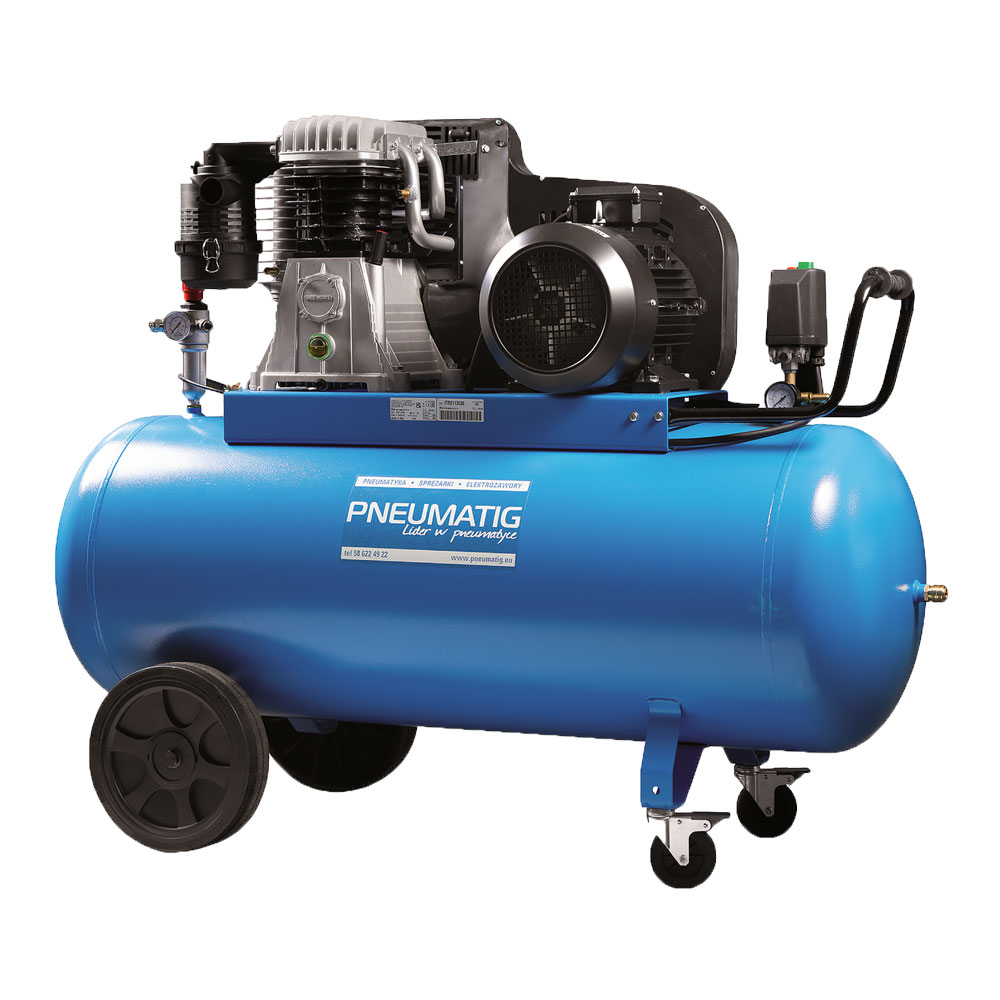
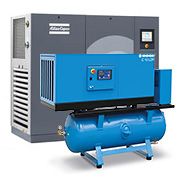
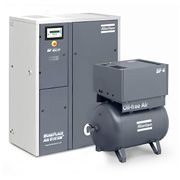
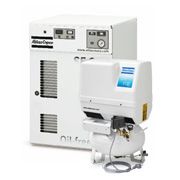

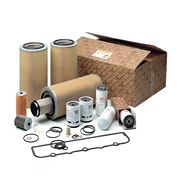
Login and Registration Form